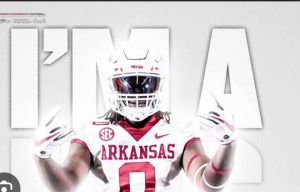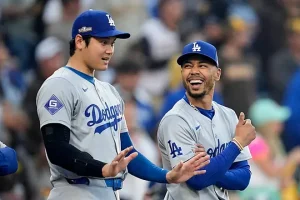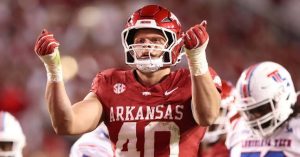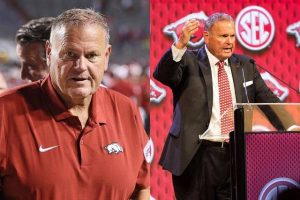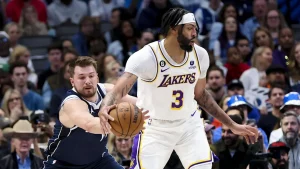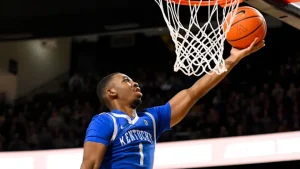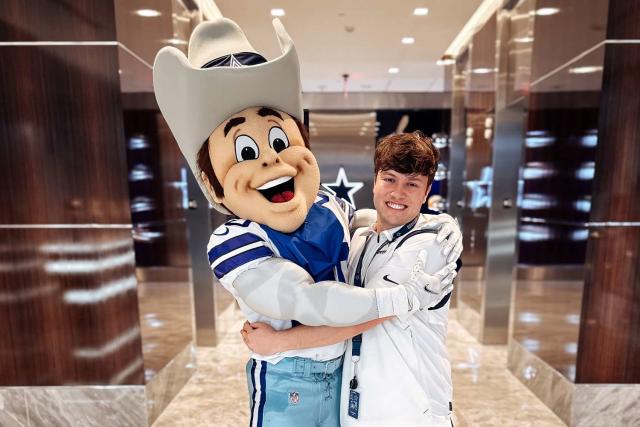
Former Dallas Cowboys Mascot Rowdy Reveals Strict Rules He Had to Follow and How Much He Was Paid Per Game
Rowdy, the iconic Dallas Cowboys mascot, became one of the most recognizable faces in the NFL world. Known for his energetic and entertaining performances on the sidelines, Rowdy wasn’t just an ordinary mascot. Behind that oversized cowboy hat and blue and silver jersey, there was a professional athlete, an entertainer, and, most importantly, a person who had to adhere to a series of strict guidelines and rules to maintain the integrity of his role as the Cowboys’ beloved mascot.
In an exclusive interview, the former mascot of the Dallas Cowboys opened up about the hidden world of mascotry — the rules, the restrictions, and even the salary that came with such a high-profile position. In this article, we’ll take a deep dive into the behind-the-scenes life of Rowdy, how he was paid per game, and what it was really like to bring joy to thousands of fans on game day.
The Early Days of Rowdy
Before Rowdy became a fixture at Cowboys Stadium, he was just a concept. In the mid-1990s, the Cowboys organization wanted to create a mascot that would personify the spirit of the team and the excitement of the game day atmosphere. Enter Rowdy, a larger-than-life cowboy character designed to connect with fans, especially children. His debut was a resounding success, and he quickly became a symbol of the team’s pride, energy, and tradition.
Though Rowdy became a beloved figure, the role of a professional mascot is far from being an easy one. Those who take on the role must not only entertain, but also represent the team in ways that extend beyond the football field. For the individual behind the costume, it can be both physically demanding and mentally exhausting. Rowdy’s story is one of professionalism, discipline, and hard work, as he reveals the strict rules he had to follow and how much he was paid to make thousands of fans smile each game.
The Strict Rules and Guidelines
Being a mascot for a high-profile team like the Dallas Cowboys comes with its own set of regulations and expectations. Rowdy, whose identity remained a closely guarded secret for years, was required to follow several strict rules. Some of these rules focused on personal conduct, while others revolved around maintaining the integrity of the Cowboys brand.
1. No Speaking
One of the most prominent rules for Rowdy was that he was not allowed to speak. Mascots, particularly those in high-profile roles, communicate primarily through body language, gestures, and actions. For Rowdy, the mandate to never speak was both liberating and challenging. On the one hand, it allowed Rowdy to focus entirely on his physical performance, which required intense training. On the other hand, it meant that he could never verbally interact with fans or teammates.
This silence added an element of mystery to Rowdy’s character, but it also required an immense amount of creativity. Rowdy had to convey excitement, surprise, and emotion through exaggerated facial expressions, hand gestures, and movements that were easy for fans to interpret.
2. Maintaining a Positive Image
Mascots like Rowdy are often seen as the face of a franchise, and because of this, they are held to a higher standard of conduct. Rowdy was required to maintain a consistently positive and family-friendly image. This meant no gestures or actions that could be perceived as inappropriate or offensive, no matter how much fans may have egged him on. Rowdy had to embody the values of the Dallas Cowboys organization at all times — which included maintaining a cheerful disposition, fostering a fun atmosphere, and avoiding any behavior that could lead to negative publicity.
3. Physical and Mental Endurance
Being in the costume was no small feat. Rowdy had to maintain high energy throughout the game, no matter the temperature inside or outside the stadium. While the stadium might be filled with fans enjoying the game, Rowdy was working tirelessly to keep the crowd engaged. This required both physical and mental endurance.
Rowdy had to undergo regular physical training to stay in shape. The costume itself was heavy and insulated, making it uncomfortable during the summer months when the Cowboys played at home in the sweltering Texas heat. In these situations, Rowdy had to be especially cautious about dehydration and exhaustion, as the intense physical activity under the hot lights could easily lead to health issues. Additionally, Rowdy had to stay in top shape to perform acrobatic moves, stunts, and dances that delighted the crowd.
The mental demands were also high. Rowdy had to remain positive and animated even on days when the team was losing or the atmosphere at the stadium was less than ideal. His role was to lift the spirits of the fans, and that required mental toughness and focus.
4. Never Breaking Character
Perhaps the most challenging rule of all was that Rowdy had to stay in character at all times. Whether he was on the field, in the stands, or even in the locker room, Rowdy could not break character. This meant no slipping up and revealing the person inside the costume, a practice that required discipline and a constant focus on the role.
There were instances where Rowdy could have easily dropped the act — for example, during breaks when the fans were distracted by the game itself. However, Rowdy had to maintain the illusion of being the character that fans knew and loved. Even in situations that were outside the stadium, Rowdy was expected to represent the Cowboys brand in a way that maintained the integrity of the mascot’s identity.
How Much Was Rowdy Paid Per Game?
While Rowdy’s role was demanding, it was also highly rewarding, especially when it came to compensation. Many people might assume that a mascot’s pay would be minimal compared to the salaries of the athletes on the field, but Rowdy’s pay was actually quite competitive for a mascot in the NFL.
Rowdy’s salary varied over the years depending on the team’s needs and the nature of his appearances. However, it’s reported that at the height of Rowdy’s tenure, he was paid a set fee per game. For a game day, Rowdy could earn anywhere from $500 to $1,500 per appearance, with bonuses for additional appearances such as at community events, charity functions, and special Cowboys-related activities. While this may seem like a lot for a few hours of work, the reality was that Rowdy was expected to give his all during every game and event. His contract typically also covered non-game days when Rowdy would make public appearances at sponsors’ events, schools, or promotional activities, all of which added to his pay.
However, it wasn’t just about the paycheck. Rowdy’s role provided him with a significant amount of fame and recognition, both in Dallas and beyond. Mascots like Rowdy often become larger-than-life characters in their own right, with devoted fan bases and social media followings. While Rowdy’s salary might not rival that of a starting player on the team, it certainly paid well for the amount of time spent in character, traveling, and performing.
The Legacy of Rowdy
Rowdy was not just a mascot — he was a symbol of the Dallas Cowboys’ dedication to fan engagement and entertainment. Throughout his time with the team, he brought joy to millions, became an integral part of the Cowboys’ game day experience, and helped form a deeper connection between the team and its supporters.
In reflecting on his time as Rowdy, the former mascot shared how special it was to be part of such a storied franchise and how much pride he took in bringing smiles to fans’ faces, especially kids who looked up to him as a larger-than-life figure. Even as he transitioned out of the role, the legacy of Rowdy continued to resonate in the hearts of Cowboys fans, a testament to the powerful impact mascots have in sports culture.
While Rowdy may no longer be the face of the Cowboys, the rules, the training, and the experiences behind the mask are ones that will stay with him forever. For anyone aspiring to become a mascot for a professional sports team, Rowdy’s story serves as a reminder that even the most entertaining roles in sports come with hard work, discipline, and an unyielding dedication to the team and the fans.
